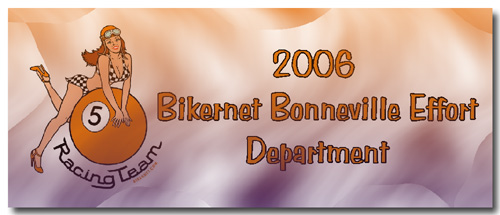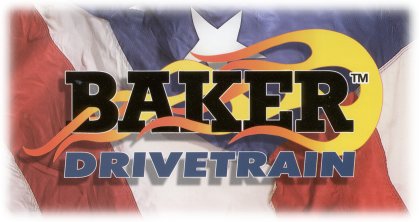

Getting down to the bottom line here. I was beginning the wiring and hooking up hydraulic brake lines from ISR controls, from LA Chop Rods to Brembo brakes. These controls are slick and mechanical looking. Gard told me right up front, “Use only DOT 4 brake fluid.” I was blown away. I thought DOT 5 was the answer to all custom applications. Seems it messes with some of the Tephlon internal components. Gard supplied me with a jug of DOT 4 and I was good to go.

Since I had a black throttle cable and clutch cables, I slipped ½-inch shrink tubing over the pre-made Goodrich hydraulic cables and used a heat gun to shrink 'em.

The V-Bike kit comes with a complete set of hydraulic brake line fittings and copper crush washers. I tried several options before I got serious. The Brembo Calipers come with interesting knobs that catches chromed hydraulic fittings and prevent them from pivoting during the tightening process. If you’ve ever marred a fitting trying to hold it still, you’ll relate.

There comes that time when a builder scours his list of options and concludes that he’s made all the goddamn adjustments needed and it’s time to bleed the brakes. I thought I reached that delicate spot then discovered several loose fittings. With everything tight we added DOT 4 and began the bleeding process.

The key to bleeding is gravity. If it’s working for you, like this front ISR brake job, you’ve got it made. If not, you’re fucked, no matter how many bleeding tools and tricks you know. Some builders inject the fluid from the bottom up on front brakes to speed the process. I filled the master cylinder, and pumped until it was empty, allowing the bubbles to release. When I sensed the lines were full, I let it set over night after refilling the reservoir. It sorta bled itself in the ghetto moonlight. I pumped it a couple of times, topped it off and was good to go in the morning. LA County Chop Rods owns the exclusive distribution rights for ISR in the western states and we’ll show you more of their components over the next couple of months.

 between the pads, lifted the rotor so gravity hauled the air toward the bleeder screw and went to work. In a couple of pumps it was bled and tight. I removed the file, replaced the caliper and the job was done.</p>
<p><center><img decoding=)
Next I started back on the wiring. After laying it out I decided that I could still use the goofball, machine turned panel I built for the ignition switch. I decided to use Gard Hollinger’s ISR switches on the bars for the High/Low beam and the starter button and ignition switch on the right.

I drove over to the local Marine store to find the toughest, most durable toggle switch and they didn’t have shit. The guys at LA Chop Rods have turned me onto a couple of fantastic hardware stores and I discovered an electronics supply that kicks ass.

I cruised past California Harley-Davidson and picked up a 30-amp circuit breaker then later discovered I didn’t have the spring clip holder. Larry Settle clued me in about the aftermarket jobs. “They don’t last,” He said. “They don’t seem to have the same level of spring tension.” I dug up a stock one and mounted it to the V-Bike Battery box with a pop rivet.

Initially I decided to roll with a starter button and a kill button, but changed my plan to a starter button and on/off ignition switch. I also need to add a Bonneville launched rider switch that kills the bike if the pilot leaves town. I’ll get to that later tonight.


Here’s the ISR High/Low beam switch and behind the scenes switch. “Be careful soldering the connections,” Gard said. “The switch is delicate.” I immediately broke it. Then I found the cool electronics store and discovered a replacement, albeit slightly different. It’s tough enough dealing with the original, but modifying a slightly different on-on switch to fit into these tiny enclosures is a bastard. I ultimately ordered another switch. Now I have to endure the drill once more. Be careful.

I used connections in a couple of positions like the headlight and rear brake switch to give me some flexibility in the advent I need to remove components.

Here’s my modified kicker mechanism with a Dyna Glide Spring. As it turned out it works well.

I ground most of the welds, then send the bracket to Foremost Powder Coating for protection.

There she is powdered and installed. I still haven’t tested her lean angle. Just jogged down into the shop and backed her out of the lift vice. She leaned over just perfect. Moving right along.

It was that time to mount the clutch cable to the Baker 6-speed transmission. I don’t really have a preference between cables and hydraulic clutches. It’s a personal choice. Sometimes cables just seem easier to me.


I popped off the cover and grabbed a large set of clip-ring pliers to remove the bearing ball ramp. I remember later wondering if the throw-out bearing and clutch push-rod were in place—they were. I get such a kick out of building something and being surprised that all the elements are already in place. Some companies, like Baker, do a helluva job, also BDL, about making their shit complete. With the cable in place, screwed into the cover, I assembled the ramp to the inner cable and returned the bearings, the cover and the clip ring. I smeared some lubricant around the fresh gasket and installed the cover. I made sure all the Allens were snug by cross tightening them, then torqued them down.

I kept the photograph of John Reed’s original V-Bike design handy for reference. It’s the inspiration for this bike which will run on the salt flats soon. I have high hopes for its tradition to last as a bike that handles like a Buell, but’s big enough for me and hauls ass. We’re getting close.

These Odyssey gel batteries come with specific instructions from Custom Chrome. I was told to start charging it early and build to the final stage. I marked the positive terminal with a silver felt pen and put it on a Battery Tender for a day.

It took me awhile to find the fastener length I needed for the True-Track. Then I felt the spacer needed lengthening to keep the Heim joint reasonably straight to the modified True-Track. As it turned out I rode my altered Road King, in concert with a new 2007 Road King, to Sturgis. With the True-Track installed on my King it handled better than ever. The new 96-inch King still had the 85-95-mph sway.

In the next segment we’ll discuss Dyna axle adjusters and Gard Hollinger’s mods to my BDL inner primary to allow me to run mid controls. We’re exactly two weeks from leaving for Bonneville. The paint is complete, but we’re waiting on the Accurate 120-inch Pan. If we’re damn lucky, it will be running this weekend. Hang on for the next segment which includes shot of Yvonne Mecailis handling the graphics on the tank.
–Bandit

